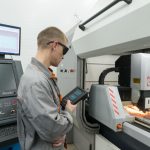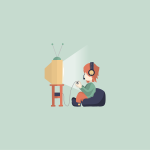Colour is pivotal in interior design, not just in aesthetics but in influencing human emotions and behaviours. Understanding the psychological impact of colours can transform ordinary spaces into environments that reflect and enhance desired moods and atmospheres. This concept is extensively explored in online interior design courses, where students learn to harness the power of colour to create practical, mood-enhancing spaces. Whether redesigning a home or shaping the interior of a corporate office, colour psychology is an essential tool in every designer’s arsenal.
The Impact of Color on Perception and Emotion
Colour can profoundly affect how a space is perceived. Light colours, such as pastel blues and greens, are often calming and can make a room feel larger and airier. Dark colours, like navy or rich burgundy, tend to create feelings of intimacy and sophistication but may make a space appear smaller. By understanding these effects, designers can manipulate the mood of a room. For instance, choosing a soft lavender for a bedroom can instil a sense of calm and rest, suitable for a restful environment. This foundational principle is highlighted in design education, where the relationship between colour and perception is dissected and studied. Reputable interior design courses include practical assignments that require students to create mood boards and room designs based on colour theory. This hands-on approach helps learners understand how different hues can be used strategically in various settings.
Using Warm Colors to Stimulate Activity
Warm colours such as red, orange, and yellow can evoke feelings of warmth and excitement and are known to stimulate activity. These colours are ideal for physical activity or social interaction spaces, like exercise rooms or living areas. Red, in particular, can raise energy levels and increase heart rates, making it a good choice for areas that benefit from high energy. However, balancing these vibrant colours with neutral tones is crucial to avoid overwhelming the space. Lessons in colour application within various online interior design courses often emphasise the strategic use of warm colours to invigorate spaces effectively. Students can experiment with different shades and intensities through simulations and virtual design studios to see their effect on room dynamics. Coursework includes case studies of successful commercial and residential spaces utilising warm colours to enhance activity levels.
Cool Colors to Calm and Soothe
On the opposite end of the spectrum, cool colours such as blue, green, and purple are beneficial in environments meant to be serene. These colours are believed to have calming mental effects and are excellent choices for bedrooms, bathrooms, and offices where concentration or relaxation is needed. Blue, known for reducing anxiety, is often used in workspaces to enhance productivity. When these theories are applied through a structured curriculum, learners can see firsthand how colour influences human psychology and spatial dynamics. Online courses provide interactive tools that allow students to use cool tones in virtual environments, assessing their impact on perceived space and ambience. Discussions and critiques led by experienced designers help students better understand using cool colours to create peaceful settings.
Neutral Colors for Balance and Sophistication
Neutral colours, including shades of white, black, grey, and brown, provide backgrounds that calm or complement bolder colours. In interior design, neutrals often create balance, allowing more vibrant colours to stand out while contributing to a sophisticated and timeless atmosphere. These colours are also excellent for showcasing textures and shapes within a room. Many designers trained through reputable courses learn to use neutrals to establish a professional yet inviting atmosphere, crucial in corporate settings or minimalist designs. Interior design courses offer modules focused on the strategic use of neutrals, including their psychological impact and role in creating flexible spaces that can easily be updated with accents. Students learn to integrate textures with neutrals to add depth and interest without overwhelming the senses.
Psychological Effects of Unexpected Color Combinations
Combining colours unexpectedly can lead to dynamic interiors that reflect creativity and modernity. For example, pairing muted greens with metallic accents can create a contemporary yet earthy feel. Experimenting with colour can also involve contrasting warm and cool tones, such as pink with a soft green, to enhance a space’s visual appeal and emotional response. Courses in interior design often challenge students to experiment with colour palettes, teaching them how to achieve balance and harmony while pushing design boundaries.
For anyone interested in delving deeper into the strategic use of colour in interiors, enrolling in an online interior design course can provide the necessary knowledge and skills to apply these concepts effectively. This education empowers designers to make informed decisions that transform everyday spaces into tailored environments that enhance daily living. Colour in interior design goes beyond decoration; it is a powerful tool that affects mood and psychological well-being. By mastering colour psychology, designers learn to craft spaces that look stunning and feel aligned with their occupants’ emotional needs.
Lynn Martelli is an editor at Readability. She received her MFA in Creative Writing from Antioch University and has worked as an editor for over 10 years. Lynn has edited a wide variety of books, including fiction, non-fiction, memoirs, and more. In her free time, Lynn enjoys reading, writing, and spending time with her family and friends.















